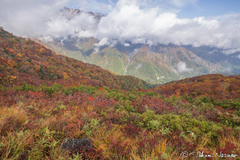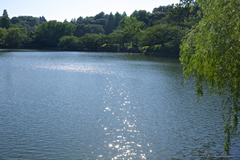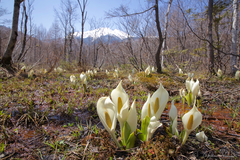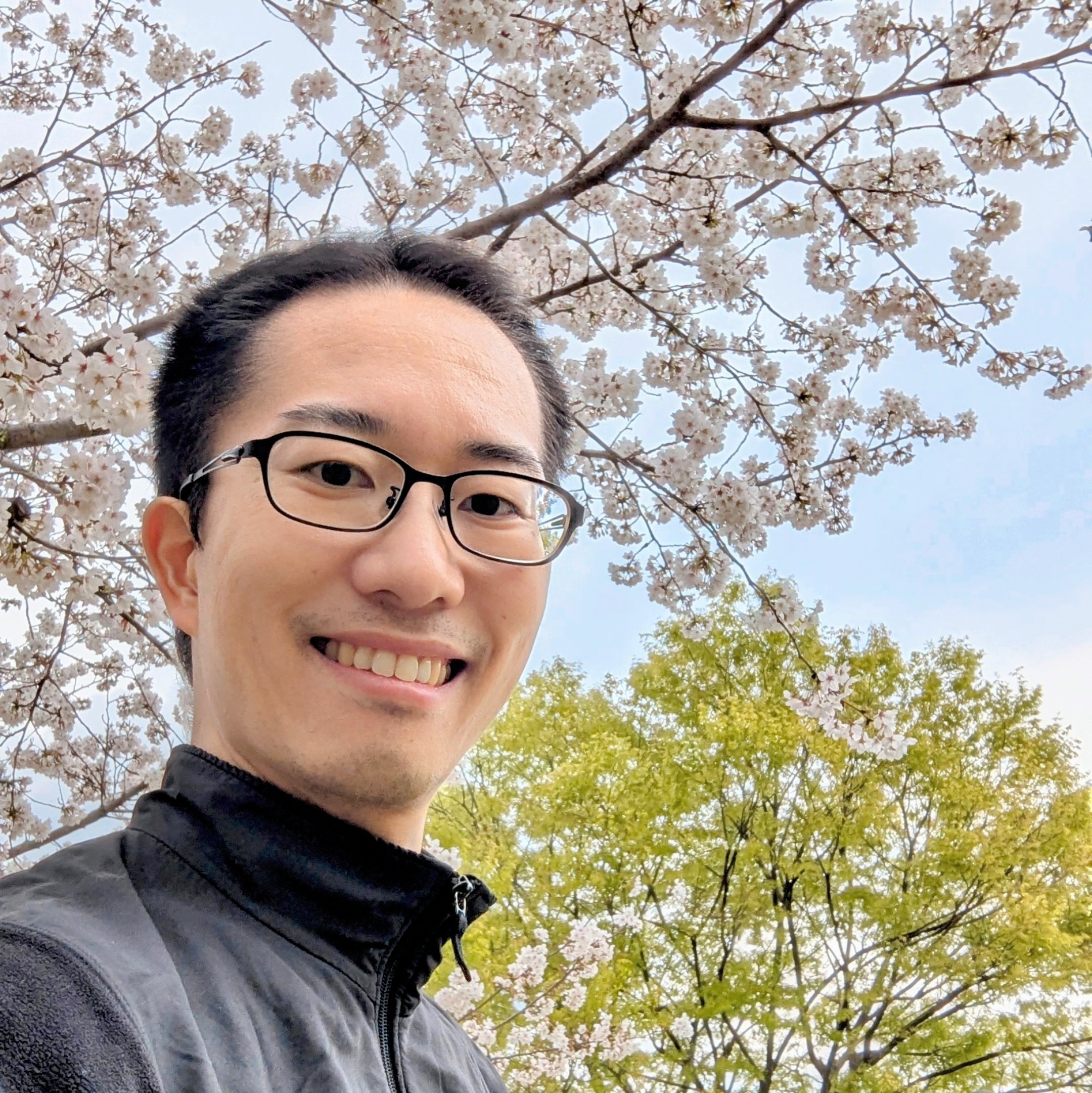Nature in the City of Niigata - Round Walk around Lake Toyanogata
Canon EOS 6D, Tamron SP 70-200mm F/2.8 Di VC USD (70mm, f/8, 1/400 sec, ISO-100)
I'm back in Niigata now!
And the small trip for snowscapes has started! As I moved by night bus from yesterday, I arrived at Niigata Station at 6 o'clock this morning. I was expecting that I would manage to see some snowscapes, which I rarely find in Tokyo. This is why I started to walk from the station before dawn.
The destination is Lake Toyanogata, a big lake in the south of Niigata Station. I walked about 2km and found the lake at dawn. The circumference of the lake is over 8km. The sky in the east got orange in the chilly air.
After I reached the lake, I walked counterclockwise and looked for a good place to take photos of the sunrise. The street is well-paved and easy to walk on. I finally found this nice place and went down from the street to the snowy ground.
Canon EOS 6D, Tamron SP 70-200mm F/2.8 Di VC USD (70mm, f/8, 1/250 sec, ISO-100)
I found less snow than I had expected. Niigata City has already had plenty of snow several times this year. But the continual rainfalls and sunny weather seem to have melted the snow. You will only find some snow from this photo.
Canon EOS 6D, Tamron SP 70-200mm F/2.8 Di VC USD (200mm, f/8, 1/250 sec, ISO-100)
It's not like normal landscapes of Niigata, but it was pretty nice to see this beautiful sunrise instead.
Canon EOS 6D, Tamron SP 70-200mm F/2.8 Di VC USD (200mm, f/4, 1/160 sec, ISO-320)
I shooted some macro photos of the snow. It seems like the snow around the plants melts faster by rain.
Canon EOS 6D, Tamron SP 70-200mm F/2.8 Di VC USD (200mm, f/4, 1/160 sec, ISO-100)
Ah, I love this snowscape. I have had several concrete images for beautiful snowscapes to shoot, and this is one of them. The snow undulates gently, and the sunlight gives wonderful contrast of light orange and blue. This must be only available at dawn or at dusk.
Canon EOS 6D, Tamron SP 70-200mm F/2.8 Di VC USD (113mm, f/4, 1/160 sec, ISO-320)
The sun was shedding light to the ground here, too. I moved a bit from the undulating snow and found an area with lots of trees. As the snow is melting, I enjoyed the contrast of the white of snow and the brown of fallen leaves.
Canon EOS 6D, Tamron SP 70-200mm F/2.8 Di VC USD (200mm, f/2.8, 1/160 sec, ISO-200)
Ohh... I found some garbage on the paddy fields... No garbage, please. Save the nature!
Canon EOS 6D, Tamron SP 70-200mm F/2.8 Di VC USD (143mm, f/9, 1/160 sec, ISO-100)
The sun rose higher and the ground received more sunlight. I was about to finish walking half of the circumference.
Canon EOS 6D, Sigma 12-24mm f/4.5-5.6 IIDG HSM (12mm, f/8, 1/200 sec, ISO-100)
I'm now in the southern side of Lake Toyanogata! The sunrise time had already ended, and I found this amazing skyscape in front of me! It is really quite rare to see such a nice weather in winter of Niigata. I was pretty lucky!
Canon EOS 6D, Tamron SP 70-200mm F/2.8 Di VC USD (200mm, f/2.8, 1/1600 sec, ISO-100)
Of course, I found many birds, too. Toyanogata literally means "lake as a bird house". I saw various kinds of birds and heard a lot of birdsongs.
Canon EOS 6D, Tamron SP 70-200mm F/2.8 Di VC USD (98mm, f/4, 1/400 sec, ISO-100)
To my surprise, I found some footprints of birds, too. I didn't imagine that the footprints are left clearly like this. What a great encounter this is!
Canon EOS 6D, Sigma 12-24mm f/4.5-5.6 IIDG HSM (20mm, f/5.6, 1/200 sec, ISO-100)
It is the solitary pine tree which appealed me a lot in the southern side of the lake. There is a stone monument about the origin of this town. I translated all the text in English here to end this post.
Canon EOS 6D, Tamron SP 70-200mm F/2.8 Di VC USD (70mm, f/2.8, 1/640 sec, ISO-100)
Story of Seigoro District
This village was opened up by 8 farmers in 1640. The 8 farmers, who followed their load Mizunoguchi and dreamed of opening up the new paddy fields, left Daiseiji Mitani Village of Kaga Province, moved by boats after worshipping their local deity "Kasuga Daimyojin", and finally started the cultivation of this land.
Soon, one of the 8 farmers, Seigoro, came down with an illness. His comrades traveled far for good medicines in Toyama Province and looked after him kindly, but Seigoro finally died.
They started to call his loved land "Seigoro" because they wanted to keep remembering Seirogo who died before their dream came true.
The hardship of cultivation was beyond their imagination. They had numerous floods from Lake Toyanogata. But they helped each other, developed the embankments, and protected "Seigoro" from the floods.
It is the relic of the embankments where the stone monument was built. The tree next to the monument was planted as a sign of the entrance to River Seigoro, and has been called "Solitary Pine Tree". Once fog fulfills the lake of common reeds, any boat loses its way. Many people were actually saved thanks to the clear silhouette of this pine tree.
When boaters were going home in a hurry, the sun sank into the edge of Sado Island and the sunset was reflected beautifully on the lake. The city of water dominated their eyesight and made them feel as if they had been in the utopia. This landscape was called "Kiyosato-no-yusho" in the Chinese poetry of Meiji Period, selected as one of Eight Views of Lake Toyanogata. "Kiyosato-no-yusho" literally means the sunlight over purified, beautiful village in the sunset time.
This solitary pine tree and the embankments have been watching over us with great love and care. We wrote down a part of the story on the monument to preserve them and thank our ancestors' great endeavors, wishing that people inherit the spirit of cooperation forever.
May 2009
Association for Preserving Solitary Pine Tree of Seigoro District
Kamedago Agriculture and Local Planning Center






- Business (6)
- Childcare (1)
- Food (19)
- Languages (2)
- Life Hack (1)
- Local Revitalization (69)
- Photography (571)
- Web Design (11)












